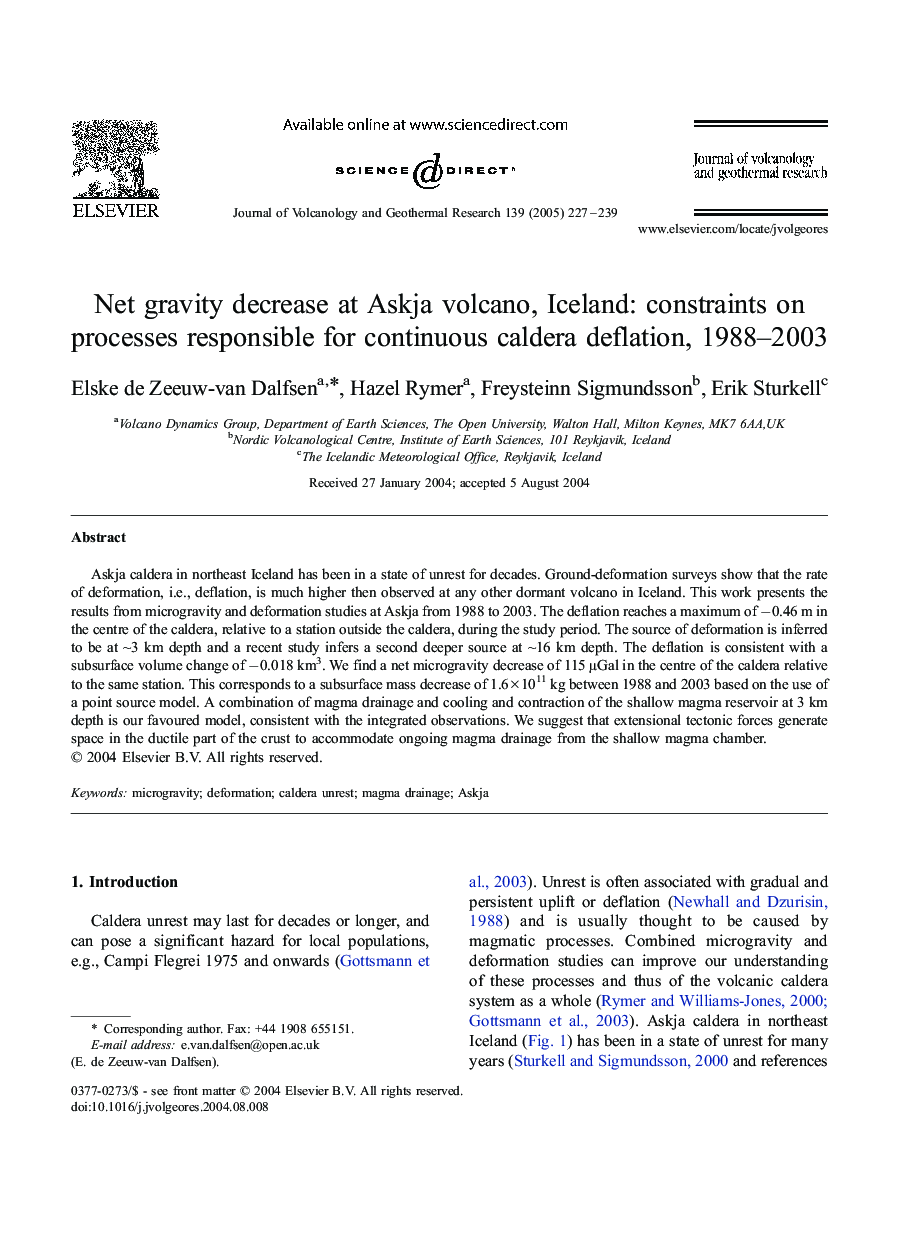| Article ID | Journal | Published Year | Pages | File Type |
|---|---|---|---|---|
| 9531681 | Journal of Volcanology and Geothermal Research | 2005 | 13 Pages |
Abstract
Askja caldera in northeast Iceland has been in a state of unrest for decades. Ground-deformation surveys show that the rate of deformation, i.e., deflation, is much higher then observed at any other dormant volcano in Iceland. This work presents the results from microgravity and deformation studies at Askja from 1988 to 2003. The deflation reaches a maximum of â0.46 m in the centre of the caldera, relative to a station outside the caldera, during the study period. The source of deformation is inferred to be at â¼3 km depth and a recent study infers a second deeper source at â¼16 km depth. The deflation is consistent with a subsurface volume change of â0.018 km3. We find a net microgravity decrease of 115 μGal in the centre of the caldera relative to the same station. This corresponds to a subsurface mass decrease of 1.6Ã1011 kg between 1988 and 2003 based on the use of a point source model. A combination of magma drainage and cooling and contraction of the shallow magma reservoir at 3 km depth is our favoured model, consistent with the integrated observations. We suggest that extensional tectonic forces generate space in the ductile part of the crust to accommodate ongoing magma drainage from the shallow magma chamber.
Related Topics
Physical Sciences and Engineering
Earth and Planetary Sciences
Geochemistry and Petrology
Authors
Elske de Zeeuw-van Dalfsen, Hazel Rymer, Freysteinn Sigmundsson, Erik Sturkell,
